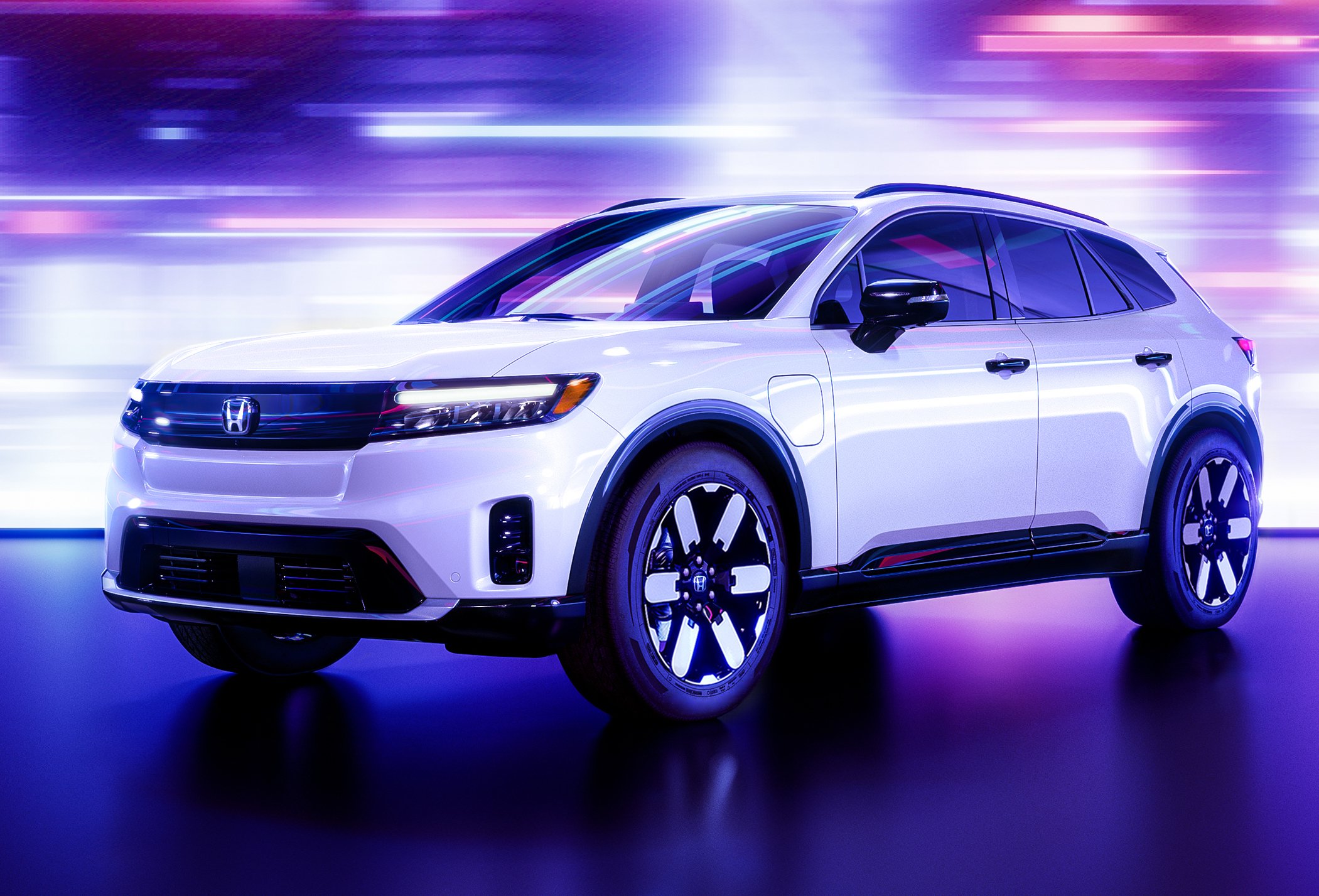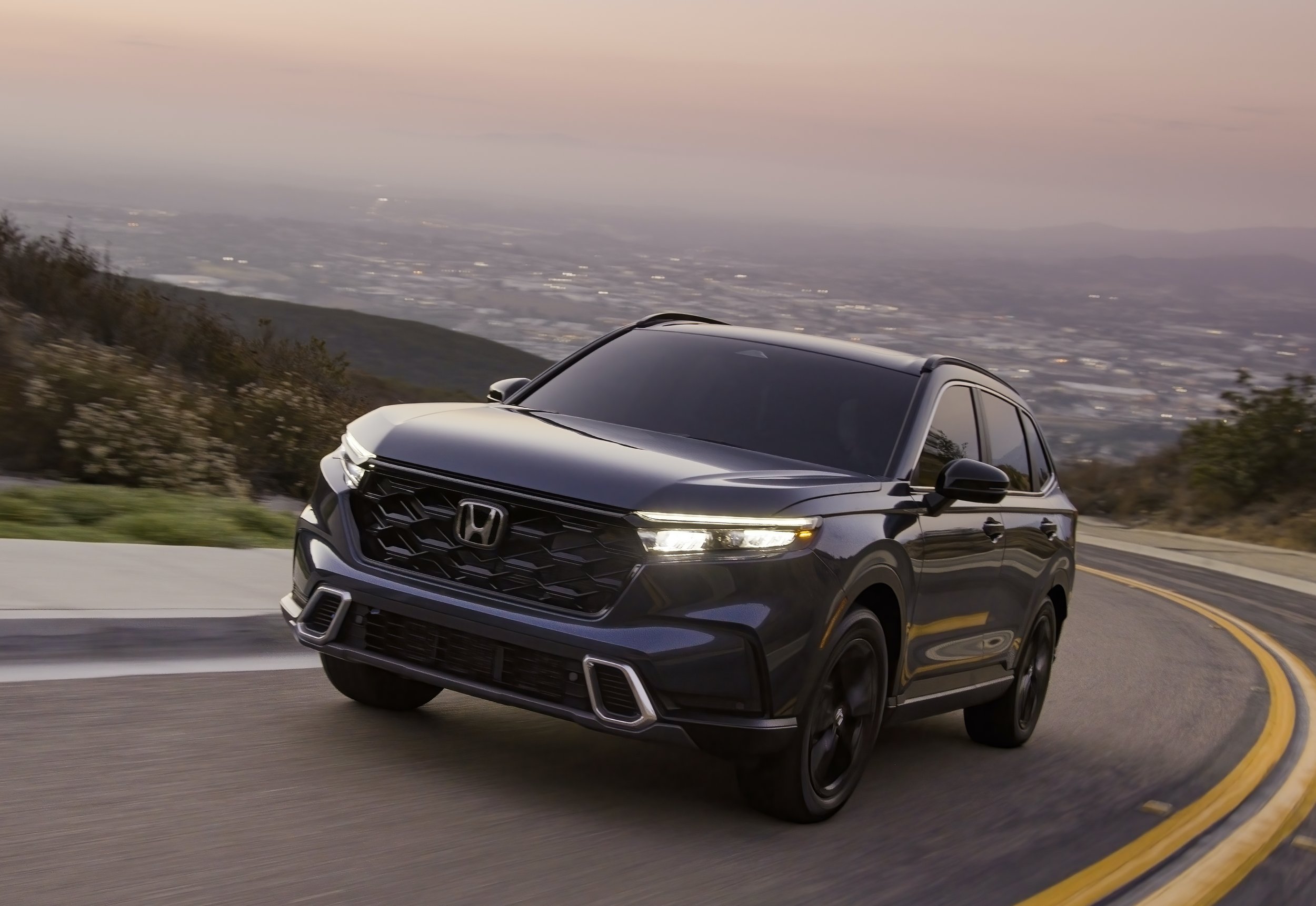Honda NZ electric ambition rests on SUV
/Local arm sees e:HEV as a good stop-gap, but wants an electric within three years.
HONDA’S next electric car is the prologue - but it is purely for North America.
ELECTRIC being higher in Honda’s international mindset hasn’t hastened potential for a battery-dedicated car to reach New Zealand – but reconciliation of this issue within 36 months is nonetheless a local target.
This has been explained by Honda New Zealand chief operating officer Peter Ashley, who concedes that customer questions about when Honda might have an EV here has now become a daily question for his sales network.
“Pretty much the front line are dealing with that on a daily basis.”
He has no answer, except to reiterate it won’t be the only car out of Japan that has shown already, as a used import, the Honda-e. That cheekily-styled but expensive small car is not authorised for official sale but, even if it ever was to be, he has doubts about it being the best choice to meet Kiwi expectations.
His view is that a medium sports utility would be more suited in respect to what it would potentially offer for lifestyle usage, performance and range. But what that car is, and when it comes, is not clear. Honda Japan has already discounted the ZR-V, a new sub CR-V car coming in May, as being a candidate for full electric.
“We are chasing down electric vehicles to secure them as soon as we can,” says Ashley.
“But we won’t have a car here by 2024; we probably are going to know more within that year.”
ZR-V landing in May will deliver with e:HEV tech, but isn’t set to become fully electric.
The Honda-e notwithstanding, Honda has been slow to get onto the electric scene, but things seems to be changing.
Last year, it announced expansive plans to electrify its line up, including the intent to launch 30 fully electric vehicles by 2030, and a goal of ramping to a production volume of more than two million EVs per year by the same time.
It has since determined to establish a division dedicated to the development of electric vehicles and other electrical products has earmarked $40 billion for electrification over the course of the next decade. That’s not just going to the car side – it also pays for development of other electrified products, including robots, personal transport options and space-based technology.
The general ideal so far seem to be to build mid-sized to large product for North America and smaller cars for elsewhere.
At the Consumer Electronics Show in Los Vegas in January, Honda announce its joint venture with Sony to build EVs, under the new brand name ‘Afeela,’ and showed off their first prototype vehicle. The plan is to start pre-orders in 2025, with shipments beginning in 2026.
The only one of those so far announced by Japan is Prologue, a joint development with General Motors and using GM’s Ultium battery system, set to start delivery in 2024.
prologue is a co-share with general motors.
Also, there’s intent for the new-generation CR-V, which Honda NZ expects to have here late year, will in addition to adopting the e:HEV (petrol-fed, electric motor driven) drivetrain tech also come out with a hydrogen fuel cell form.
Don’t get excited. Prologue and hydrogen fuel cell CR-V seem to be purely for North America and there’s just no understanding yet of Sony’s plans.
As long as Government’s Clean Car plan isn’t altered, Honda New Zealand knows every car it sells - bar one - is either already earning a rebate or is at least in the carbon neutral zone so no penalties are likely to apply before then.
However, the measures are designed to progressively toughen and ultimately that immunity will not prevail, regardless there’s indication Government is considering refining Clean Car’s primary emphasis on lowering CO2 emissions. “We’re waiting for that announcement.”
That’s in relation to Euro 6, set of limits for harmful exhaust emissions produced by virtually any vehicle powered by petrol or diesel engines that has been installed in Europe since 2015.
CR-V, seen in its US market format, is also coming later this year. WE see the e:HEV editions; the US gets a Hydrogen fuel cell model as well.
Original intent for NZ to go to Euro 6b next year is now more likely to alter; Euro 6d – which is less restrictive and more relevant to NZ – now seems more likely, enacting from 2025. Either way, NZ is still behind Europe, which is now entertaining Euro 7; which demands such low outputs as to make some kinds of combustion engine technology unfeasible.
Even so, Ashley sees Euro 6d’s introduction as important. Honda has to be ready for it else risk penalties and that readiness demands having fully electric technology in the mix.
“We need an EV here, no question, by 2026. From a company and business factor, just simply because of the cost.”
At present, the only Honda cars sold here that do not achieve carbon neutrality or a rebate are Civic Type R and Odyssey people carrier. The first is limited volume any way; the second about to depart the market.
“Everything we bring out from now on, which potentially cannot be plugged in, will have our e:HEV technology which conforms with CO2 standards.”
Whether the Odyssey nameplate will be retired is not clear, but it seems Honda is keen to develop another car to fulfil the same broad role, but with drivetrain tech that conforms to the NZ market ideal.
“There is another car being considered as a line up model for that market in the world which we potentially have access to. We’re excited that Honda is looking us more line up and that we have more access as the future goes on.”
SONY Afeela will be built by Honda - it intrigues Honda NZ, but will we ever see it?
Ashley says e:HEV is proving popular with consumers who see it as an access to electric without a plug. “It’s doing wonders for us. It continues to be a popular way of not being compromised.”
Some would argue Honda-e could likely fulfil in the same role as Jazz e:HEV. However, it is far more range-limited, with a maximum 255kms before demanding replenishment cited. So would it be useful?
“It’s an urban vehicle in the main. Because NZ’s lifestyle is more about travelling all around the country, we would be looking for something else that was more of a lifestyle vehicle. The best-selling type of cars in NZ are sports utilities.”
The Sony Afeela intrigues. “Clearly it is going to be something quite special. But we haven’t any future ideas for that. It’s a long way away.”





















